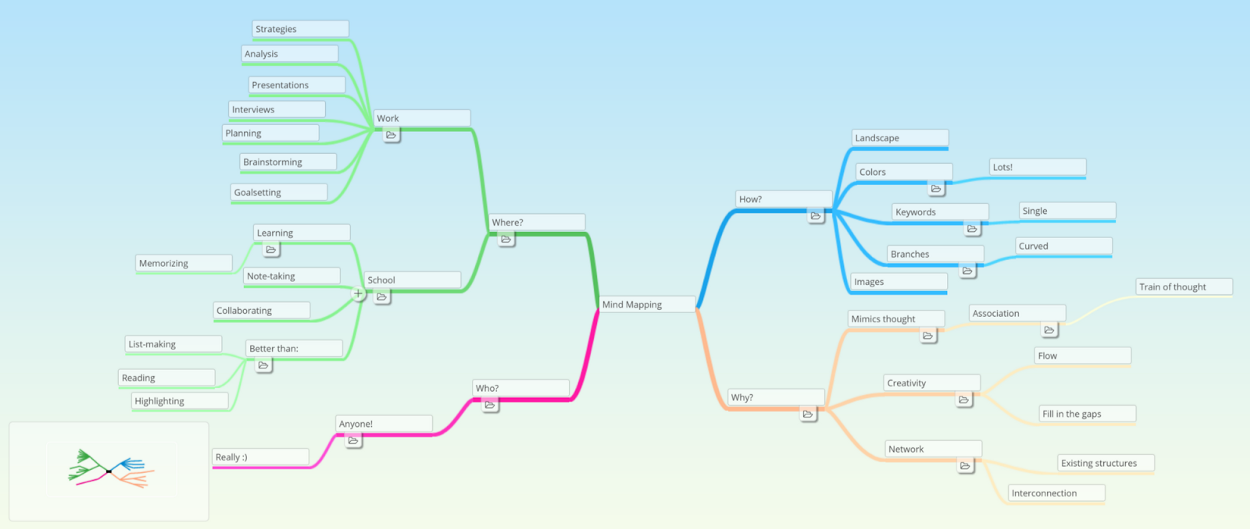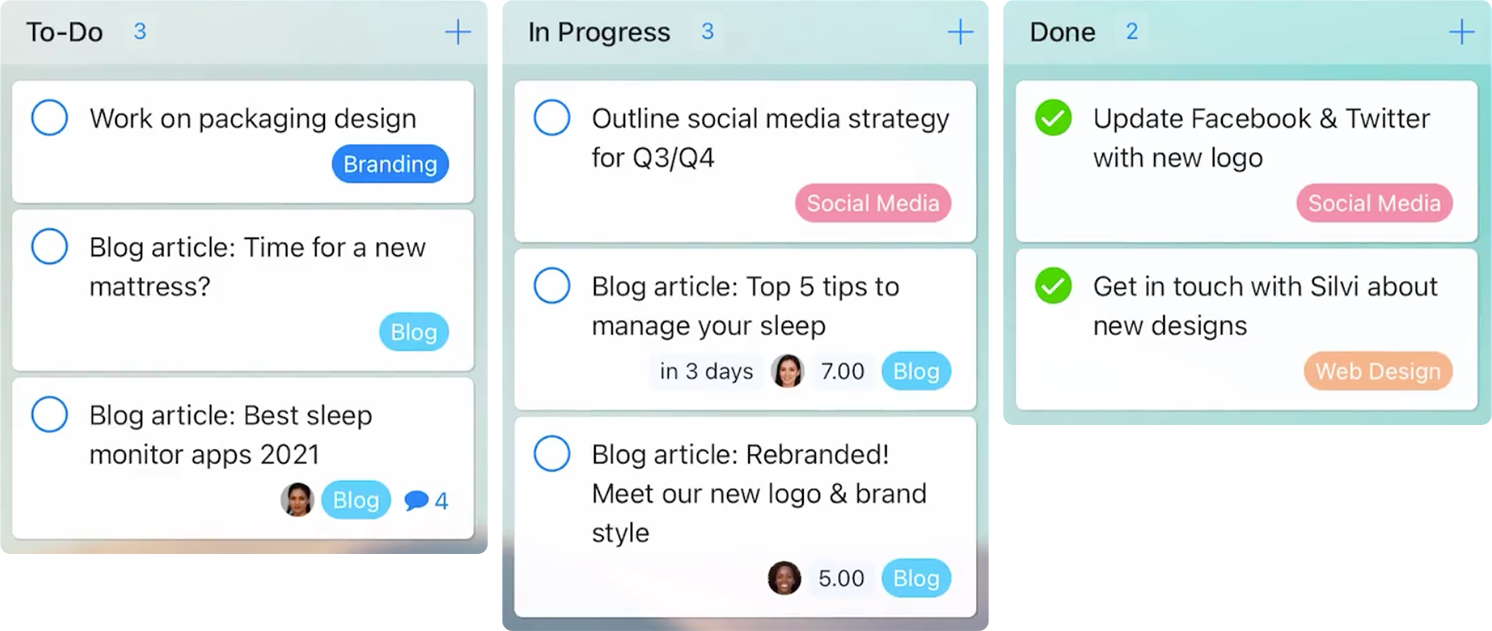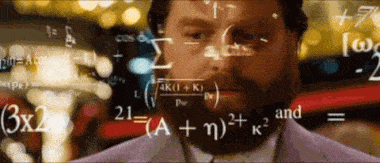8 Creative Ways to Use a Mind Map
Improve your learning skills and gain clear thinking!

Using a mind map has many benefits — but you already knew that! For anyone looking to improve their learning skills or are in need of clearer thinking (who isn’t?), this free-flowing diagram can be just the tool you are looking for. Check out some of the ways it can aid you in your daily activities.

What Is a Mind Map?
A term coined by Tony Buzan in the 1970s, a mind map is a visual representation of organized information. Formatted into a hierarchical diagram, each idea or theme is connected to at least one other, and the relationship between the two is explored. The diagram gives you a visualization of the overall information, which makes it easier to process, memorize, and organize the information.
Mind maps can be created simply by putting pen to paper, but living in this digital age as we are, there is, of course, online mind map software available (ahem, like Zenkit!). But whether you go digital or stick to the pen and paper method, be sure yours includes the following:
Key aspects of a mind map
- The focal point, or your main idea, should be represented with an image at the centre of the page. This is where the free-thinking starts, and where associated concepts will branch out from.
- The branches are the connection between the main idea to your sub-ideas. Buzan suggests only using one keyword per branch.
- Once you have the information mapped out, you will have what is known as a nodal structure. This is where each idea is a ‘node’, and it shows how all the nodes are related to each other.
- The use of colours, images, and symbols alongside words is encouraged for visual stimulation. By grouping associated concepts with the same color, it can give you a clearer overview of the information, and help retention.

Mind maps not only boost memory, but also critical thinking, creativity, and organization skills. Here’s how they can be used:
Brainstorming
Perhaps the most well-known use of a mind map, the free-flowing nature of the diagram makes it perfect for brainstorming sessions within the workplace, school, or even at home. The structure of starting with a central idea and expanding on it with associated concepts means there are no limits to the ideas you can come up with.
Team Collaboration
Whether in meetings, project planning, or study groups, using a mind map is a great tool for collaboration as it enables information and idea sharing. When we share ideas with others, it opens up our minds to think in ways that we probably wouldn’t have alone. The influence of other people’s opinions and perceptions can broaden our thinking scope, making for exciting and productive possibilities.

Simplify your project communication and task management with our user-friendly project management software.
Sign up for free today!
Note-Taking
Compared to traditional, linear note-taking techniques, using a mind map gives you a more visual way to track important information. A great way to study for exams, or even note-taking during business meetings, the unconfined technique provides you with a better way to memorize your notes.
Organization
The mind map diagram can be a useful way to plan and organize tasks. From complex project management planning to your daily to-do list, the mind map structure provides a step-by-step guide to actioning and completing your set tasks. A visual representation of your to-do list will also make it appear less daunting and achievable.
Presentations
Whether it’s for work or school, using a mind map for a presentation is an effective way to convey your message. The ability to use images will not only make for a nicer-looking presentation but can give your message a bigger impact.
Problem-Solving
An unavoidable aspect of both professional and personal life, mind maps can help with solving problems. Mapping out complex predicaments enables you to analyze the situation as a whole, and understand where the issue lies. This will then help you identify a solution, and show you the steps of how to get there.

Decision-Making
Whether at work or in your everyday environment, using a mind map could help with making important decisions. Visualizing the different outcomes of your decision provides clearer thinking, and helps to ensure you make the best decision possible. Analyzing the pros and cons this way will give you an overview of the bigger picture.
Company Structure
Because of its hierarchical arrangement, mapping out the employees of your company by using a mind map would be a great idea. From the CEO to the designers, it would showcase who reports to who, and what department everyone belongs in.
Here we’ve listed eight ways to use a mind map, but the possibilities are actually endless. The use of images and a free-flowing diagram can unleash your creativity, and organization skills, making it a handy tool for just about any aspect of life.
Have you used a mind map in a way we didn’t mention? Do let us know as we’d love to hear your experiences.
Cheers,
Dinnie & the Zenkit team
FREE 20 MIN. CONSULTATION WITH A PROJECT MANAGEMENT EXPERT
Wanna see how to simplify your workflow with Zenkit in less than a day?
Book a Live Demo
I always struggled in school to remember my notes I revised when it came for exams. I am planning to go back and study sciences including maths. will mind map solve my studying problems of forgetfulness in exams?